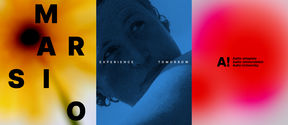Researchers at Aalto University have succeeded in using light to move artificial muscles integrated into the wings of a lace butterfly. In the groundbreaking study, light – or more precisely, infrared laser – was used to control polymer actuators. By modifying the polymers, they could be made into twist-coiled filaments, i.e. artificial muscles that respond to light and the heat it generates. Controlled by light, the artificial muscles eventually make the butterfly's wings flap.
Doctoral researcher Zahra Madani, lead author of a study published in the July issue of Advanced Materials, says that artificial muscles can bend and move in multiple directions with incredible speed and precision when controlled by light. And, unlike traditional methods, the direction and movement of these artificial muscles are not dependent on the material's natural properties but can be programmed and controlled externally through light.
Madani works as part of a team from the Multifunctional Materials Design research group at Aalto, led by Prof. Jaana Vapaavuori, specialising in the design of functional materials. Vapaavuori also says she was surprised by the variety of movement patterns that could be created simply by changing the material and the light.
The team, which brings together material scientists, physicists, and textile designers, is the reason why the artificial muscles were made to move with light in the first place, according to Madani: for example, it was the designers who came up with the idea of making the polymer yarns in the form of spring.
Future applications in clothing, robotics, and medicine
The motivation behind this research was the potential for creating advanced soft robotics and active – the so-called smart – textiles with wireless control capabilities and thus more than just protective functions. At the same time, however, the team also sought to find sustainable and more environmentally friendly materials for the development of these functional textiles of the future. For example, they have sought to find substitutes for purely petroleum-based nylon yarn from bio-based materials.
“Essentially, this research opens the door to a new generation of adaptive, responsive technologies that can make our lives safer, more convenient, and more comfortable, while also being more sustainable,” says Madani.
And according to both Madani and Vapaavuori, in addition to being environmentally more friendly, the results of the study could have a number of promising applications in the future, because as the results show: the power of light alone can move even large, macroscopic textiles.
Madani mentions that light-controlled artificial muscles could revolutionise the development of active textiles or soft robotics. For example, she says that in the future we might see clothes that adapt and adjust to changes in light or temperature when we go outdoors – like jackets that automatically tighten when it's cold or loosen when it’s warm.
“In soft robotics, reacting and adjusting to the environment can be useful precisely because of the remote control – robots don't need to carry a power supply, but the energy comes remotely from light,” Vapaavuori continues.
In addition, the researchers believe that medical applications could also be possible, as materials can be guided by different wavelengths of infrared radiation, allowing for remotely guided operations through the skin. However, in order to achieve these future applications, more funding for this kind of applied research is needed, the researchers point out.
“As such, all the information needed to upscaling the research is already available. The next step would require funding from somewhere to support this kind of more applied research,” Vapaavuori challenges.
The study was published in July in Advanced Materials and can be found here: Light-Driven Multidirectional Bending in Artificial Muscles.
The butterfly used in the study and other research by the team will be on display at Aalto University's Designs for a Cooler Planet festival’s Entangled exhibition at the Marsio building on the Otaniemi campus until 3 October 2024.







